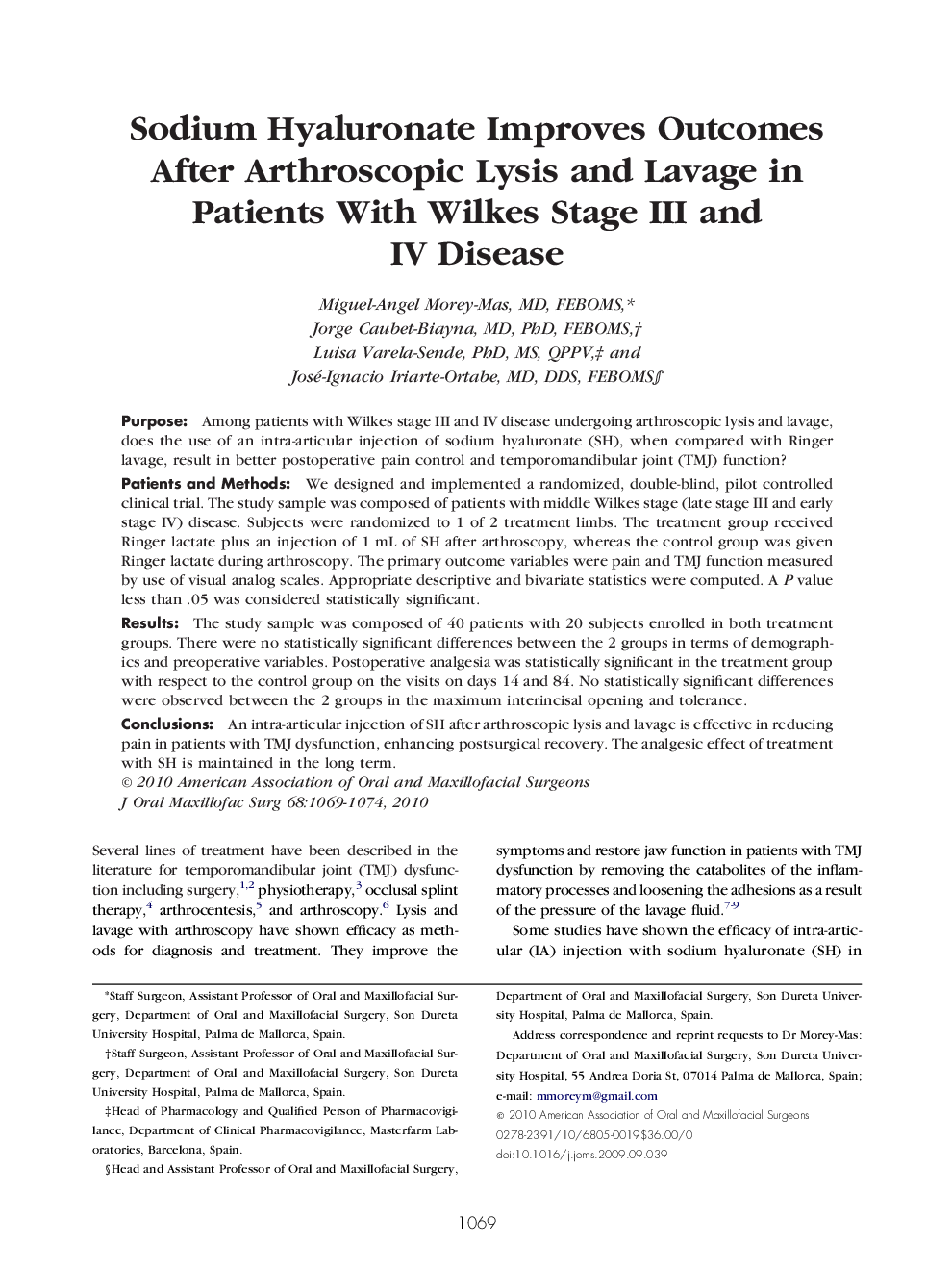| Article ID | Journal | Published Year | Pages | File Type |
|---|---|---|---|---|
| 3155007 | Journal of Oral and Maxillofacial Surgery | 2010 | 6 Pages |
PurposeAmong patients with Wilkes stage III and IV disease undergoing arthroscopic lysis and lavage, does the use of an intra-articular injection of sodium hyaluronate (SH), when compared with Ringer lavage, result in better postoperative pain control and temporomandibular joint (TMJ) function?Patients and MethodsWe designed and implemented a randomized, double-blind, pilot controlled clinical trial. The study sample was composed of patients with middle Wilkes stage (late stage III and early stage IV) disease. Subjects were randomized to 1 of 2 treatment limbs. The treatment group received Ringer lactate plus an injection of 1 mL of SH after arthroscopy, whereas the control group was given Ringer lactate during arthroscopy. The primary outcome variables were pain and TMJ function measured by use of visual analog scales. Appropriate descriptive and bivariate statistics were computed. A P value less than .05 was considered statistically significant.ResultsThe study sample was composed of 40 patients with 20 subjects enrolled in both treatment groups. There were no statistically significant differences between the 2 groups in terms of demographics and preoperative variables. Postoperative analgesia was statistically significant in the treatment group with respect to the control group on the visits on days 14 and 84. No statistically significant differences were observed between the 2 groups in the maximum interincisal opening and tolerance.ConclusionsAn intra-articular injection of SH after arthroscopic lysis and lavage is effective in reducing pain in patients with TMJ dysfunction, enhancing postsurgical recovery. The analgesic effect of treatment with SH is maintained in the long term.
